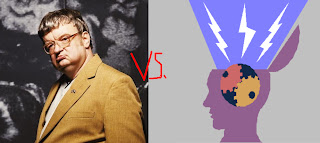At night, while you are sleeping believe it or not, your brain goes trough various stages of sleep. The first stage which consists of slowing muscle activity is the lightest stage of sleep. The second stage makes your eye movement stop and brain waves become slower. The third and fourth stages are very similar, they are known as deep sleep and this is when delta waves emerge. Finally, there is REM sleep, which stands for Rapid Eye Movement. During this stage breathing and heart rate increase and your muscle limbs are partially paralyzed, this stage is where most of the dreaming occurs. In this stage dreams seem very real. But, why do we dream? We do this because it helps the brain process new information and organize memories.
There are people who suffer REM sleep disorder. This is a strange brain condition. The dreamer acts out his/her dream because the limb muscles are not paralyzed, this is very dangerous because they can harm not just themselves, but the people around them. Dreams happen in the parietal lobe. What I find extremely interesting is the fact that if you hurt your parietal lobe, then dreams stop, this causes bad sleeping and people awaken during the night more often. Dreams fascinate everyone, they captivate ones attention. I believe that the fact that we dream every single night, even tough we don’t remember, is remarkable. “Dreaming permits each and every one of us to be quietly and safely insane every night of our lives”(William Dement).










